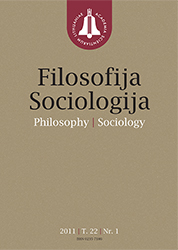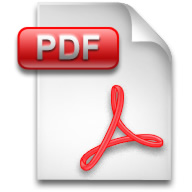
ISSN 0235-7186
ISSN 2424-4546 (online)
|
2010 m. Nr. 2
 Parenting values in academic discourse on paternity leave: Norway and Estonia compared
Trin ROOSALU, Marion PAJUMETS, Leeni HANSSON
In this paper, we compare the value discourses concerning parental roles, and in particular the role of the father in the family with minor children, as presented in the articles by researchers of two countries – Estonia and Norway.
Family policies and parental leave arrangements are part of a wider welfare ideology of a country reflecting the understanding of the division of responsibilities between the state, the market, an individual and the family. Two countries were chosen as our case-study examples for their similar social legacy of female labour market participation and public childcare arrangements. Norway is a representative of the Nordic social-democratic welfare regime which is also characterized by a high labour market attachment of women compared to most of the EU countries. Furthermore, with its generous gender-neutral family policy, Norway is recognized as one of the forerunners of gender equality. On the other hand, the family policy measures in Estonia were targeted to working mothers as parenthood was equalled to motherhood under the Soviet regime, and the most important role of an individual was that of a worker. The situation changed in the 1990s when Estonia regained its independence and introduced new family policy measures which have become more egalitarian.
There have been major differences in the welfare regimes in the past as well as in the present, and we hypothesize that these differences may have shaped, as well as have been shaped, by the public discourses used in public debates, represented here by academic discourses. Keywords: paternity leave, parenting, welfare regime, Estonia, Norway
|
Numeriai:
2017 - T.28 Nr.1, Nr.2, Nr.3, Nr.42016 - T.27 Nr.1, Nr.2, Nr.3, Nr.42015 - T.26 Nr.1, Nr.2, Nr.3, Nr.42014 - T.25 Nr.1, Nr.2, Nr.3, Nr.42013 - T.24 Nr.1, Nr.2, Nr.3, Nr.42012 - T.23 Nr.1, Nr.2, Nr.3, Nr.42011 - T.22 Nr.1, Nr.2, Nr.3, Nr.42010 - T.21 Nr.1, Nr.2, Nr.3, Nr.42009 - T.20 Nr.1, Nr.2, Nr.3, Nr.42008 - T.19 Nr.1, Nr.2, Nr.3, Nr.42007 - T.18 Nr.1, Nr.2, Nr.3, Nr.42006 Nr.1, Nr.2, Nr.3, Nr.42005 Nr.1, Nr.2, Nr.3, Nr.42004 Nr.1, Nr.2, Nr.3, Nr.42003 Nr.1, Nr.2, Nr.3, Nr.42002 Nr.1, Nr.2, Nr.3, Nr.42001 Nr.1, Nr.2, Nr.3, Nr.4 |
